Fear for health by moisture problems

Mould in a house is often a big frustration. Finding the right cause is imperative for a good life quality.
Mould of a considerable amount is unhealthy. It is very necessary to handle this problem.
Problem:
The owner of the house feared for his health after problems occurred 5 years after a renovation.
Investigation:
With measurements, examination and a tour we have determined that there are serious moisture problems in the house. The most areas around the windows, walls and floor measure relatively dry. Except below the level of the moisture membrane where the wall is directly in contact with the floor plate.
The façade is tested on porosity with a Karsten tube test. This appeared to be very porous because of which the outer cavity wall measures soaking wet.
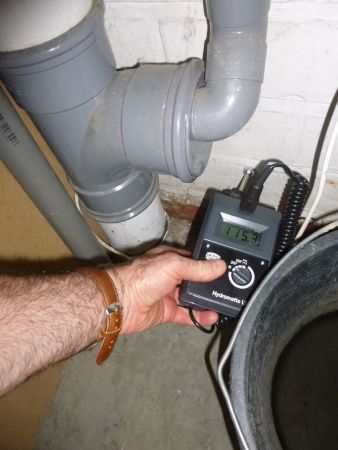
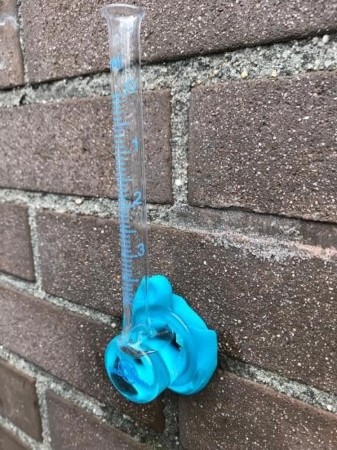
Conclusion:
Because of the missing ground level zone membrane, rainwater runs through the saturated ground level zone into the crawl space. The result is a very high underlying vapour pressure. This vapour pressure goes through the complete building and condensates on the coldest spots. The vaporisation and absorption of this moisture costs 20 - 30% extra on heating. There are way to little ventilations provided for the high vapour presure of the wet crawling space. Furthermore, because of the present T-ventilation it can rain directly into the crawling space.
Rainwater gets into the cavity wall. And as a result dew point condensation occurs in the cavity wall by temperatures of 14,2°C and lower. That's why there are white residue and lichens on the façade.
Rental with condensation in children's room
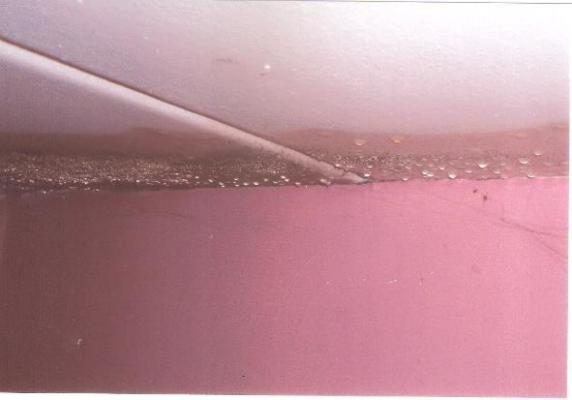
Excessive moisture in house can effect your health. Mould can have a direct influence on the breathing organs.
Occupant behaviour is never the cause of a moisture problem. Do not get misguided.
Problem:
A tenant has a problem with condensations and mould on the walls and ceiling of the bedrooms. There has been an investigation already by an expert send by the insurance company of the tenant. Their conclusion: occupant behaviour. The tenant would not ventilate enough and cause the condensation himself.
Investigation:
DThe tenant could not agree with this because the windows are open constantly. With a thorough forensic investigation from Humida the following was determined:
- A smoke gas test is executed on the roofing of the terrace. Smoke comes out of different spots.
- The ducts of the rain pipes and gargoyle are open. Because of this there is water infiltration into the cavity wall. Tis is visible on the outer wall of the bedroom.
- The crawling spaces are very wet.
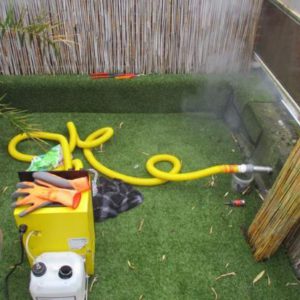

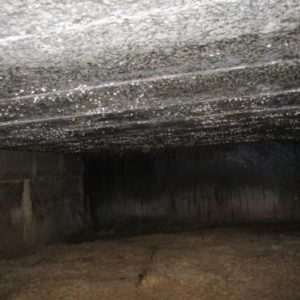
Conclusion:
Both the cellar walls and the floor are very wet and there is no ventilation in the cellar. Because of the increased vapour pressure in the crawling space, the humid air rises into the cavity wall and condensates against the wall beam of the roof which lays on this cavity wall, at the height of the bedroom walls. This is why the wall and the ceiling are wet just under the eave and that there is mold. Both in the front and the back of the appartment.
The tenant has got all the costs reimbursed from his insurance company.
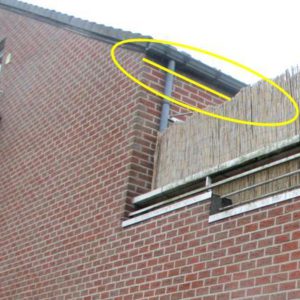
Rental house with mould and moisture damage
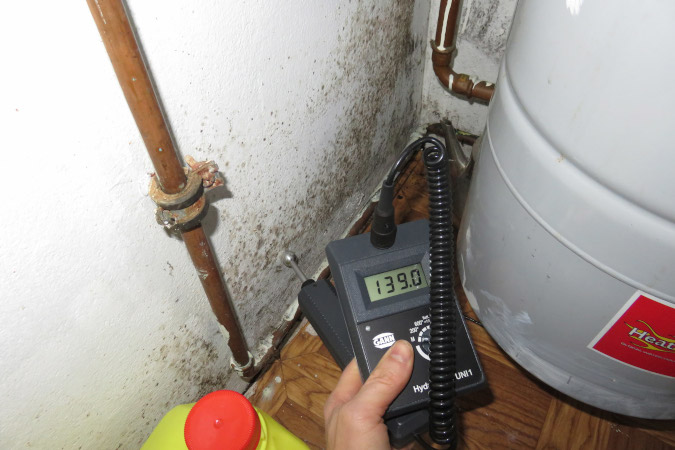
Moisture damage and mould are very annoying. Finding the right cause is always essential.
Mould of an considerable amount is unhealthy. So it is vital to deal with this problem.
Problem:
The owner of the building notices condensation on the angled side of the roof with mould as a result.
Investigation:
The investigation and moisture values point in the direction of leaking of the drain pipes. A thorough forensic leak detection was recommended to find the right cause. Our recommendations were proposed to the fire insurance of the owner. The company sent an expert to check our observations. The explanation of the expert of the insurance company was that this is mostly condensation. There needed to be placed more heating systems. The occupants would not ventilate enough.
The owner doubted this conclusion and let Humida execute a thorough leak detection. A pressure test was performed onto the water supply pipe, from which it seamed that the water pressure dropped very quickly. After some checking, it seemed the valve of the outside tap was leaking. Whet shutting it the leak stopped.
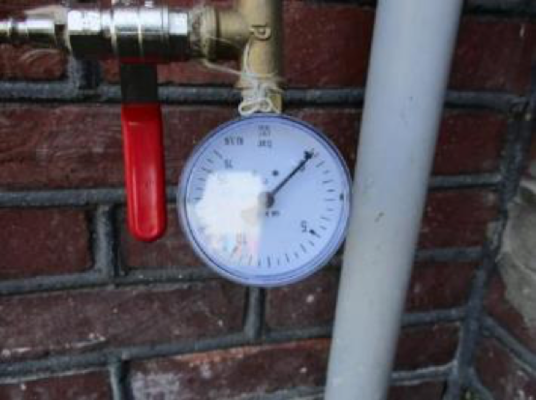
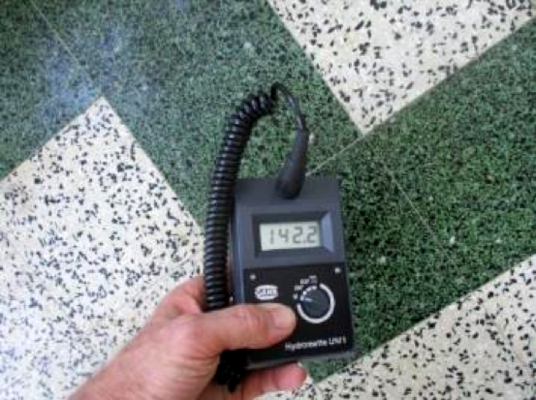
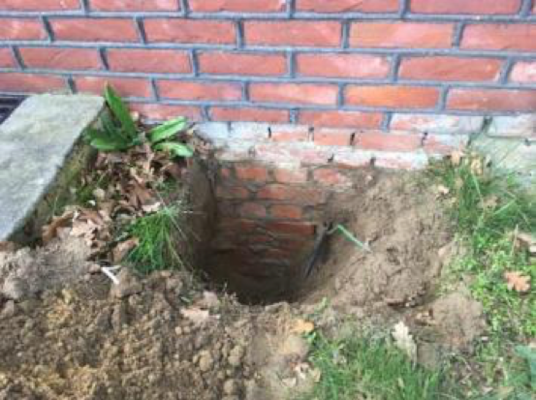
The groud level zone was checked because the floor in the whole house measured very wet. There wasn't a water repellent membrane anywhere. Also the joints between the façade stones under the ground where open. The duct was not waterproofed.
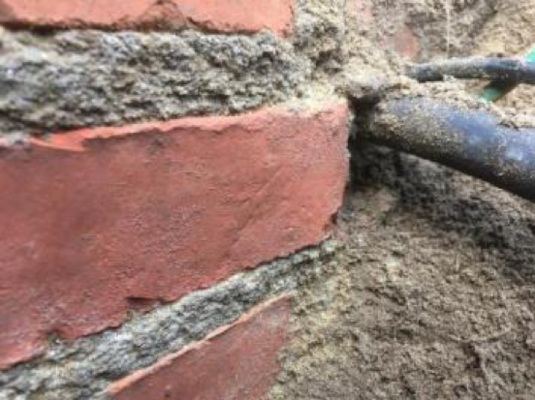
The drain pipes underground where inspected with a smoke gas test and a high resolution camera. Between the driveway and the house there were 9 cracks and obvious root growth, always on the connections.
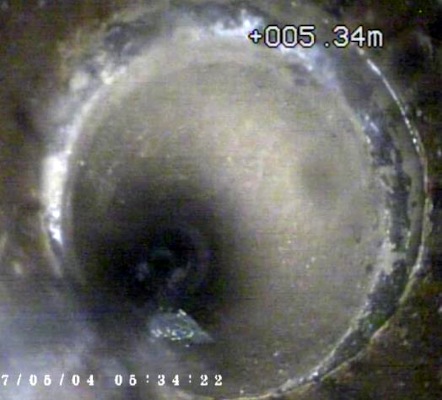
Conclusion:
There you have it. The expert from the insurance company concluded occupant behaviour as the cause. Humida found because of a complete leak detection some causes covered by the insurance.
On the top floor there is mould in both bedrooms on the ceiling. The floor of the whole downstairs measured very wet because of the leaking ground zone level around the building, so that the vapour pressure rises up to very high values. The present moisture in the floors condensates and ends up on the ceiling of the room above. Here occur waterdrops and mould onto the plaster.
The rain pipe is not connected onto the drain pipe and ends into the grass. The control walls of the kitchen and after the septic well are not waterproof anymore an display a lot of cracks and tears.


